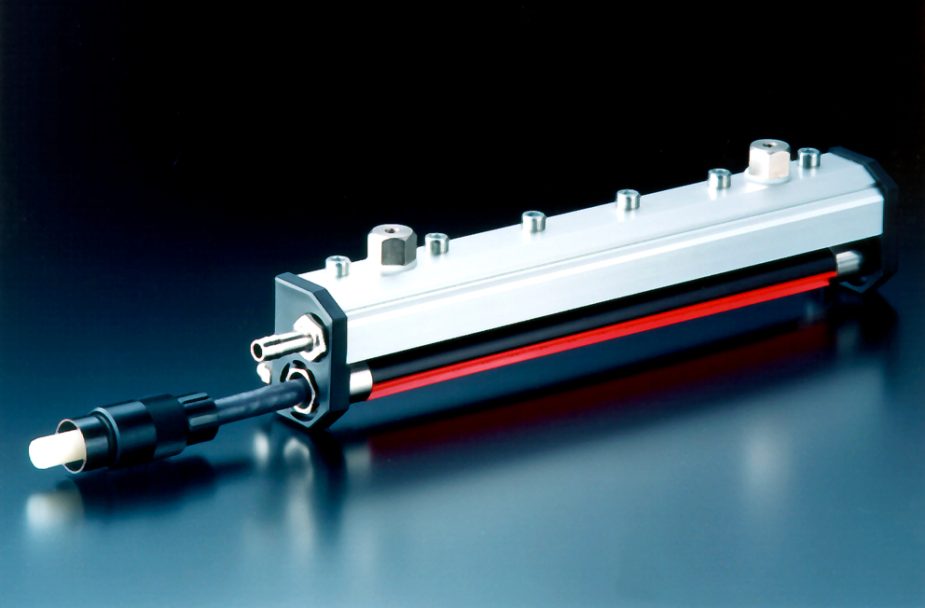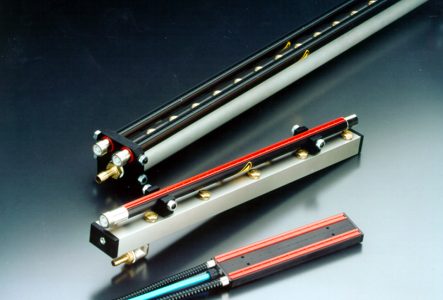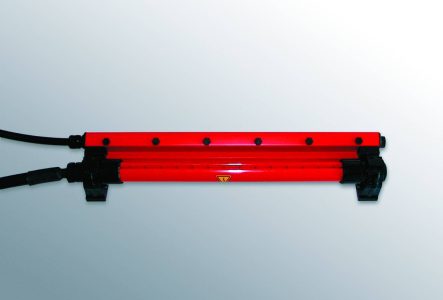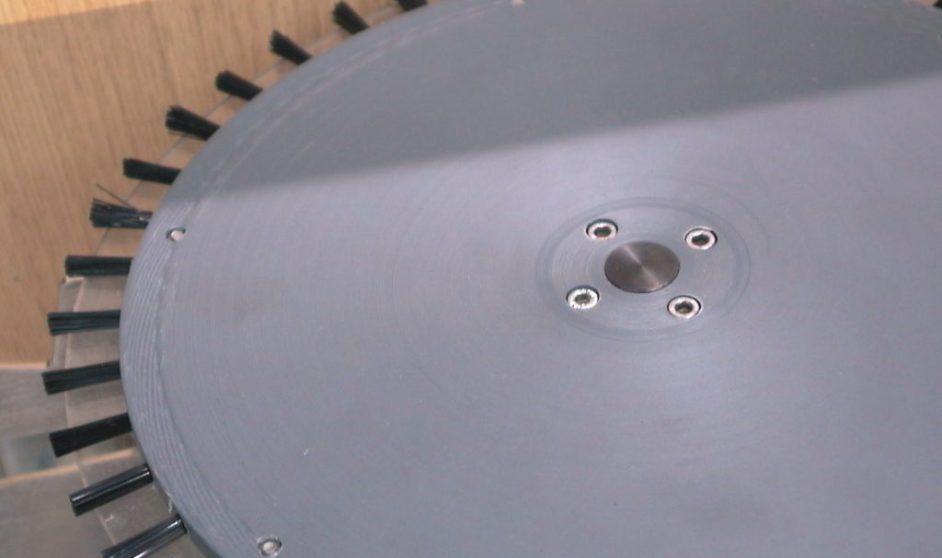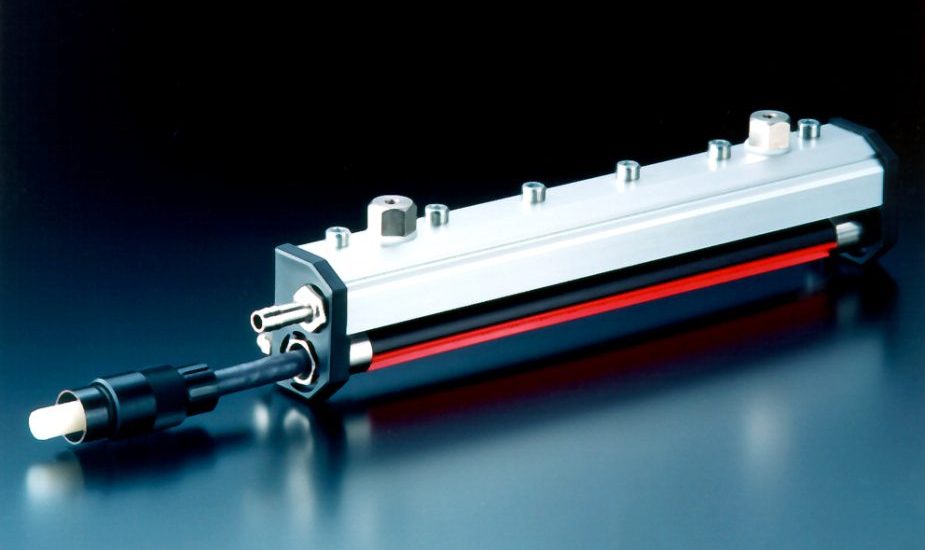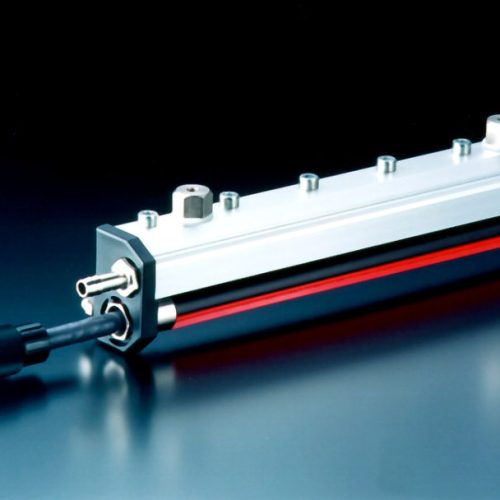Blowers
Generalities
The surface to be unloaded is not always accessible. When it is not possible to bring the boom closer, special compressed or ventilated air blowers can be used to treat an area at a distance of about 500 mm.
Air, in fact, can transport the ions generated by a rod to the charged surface. There are many blower configurations, and some are used for dedusting and have a built-in fume hood. Compressed air ionizing guns are used to unload difficult parts or parts placed off-line.
To remove dust, it is highly recommended to use our special horsehair brush, which does not generate static charges by rubbing (Lady Brush).
Available blowers
Reduced quality and high rejects due to dust are avoided by using HAUG‘s blower discharge systems. Electrostatic charges caused by rubbing during machining processes reduce their efficiency and lead to increased costs. HAUG‘s blowers are particularly effective in these cases. In fact, they eliminate dust particles and neutralize electrostatic charges.
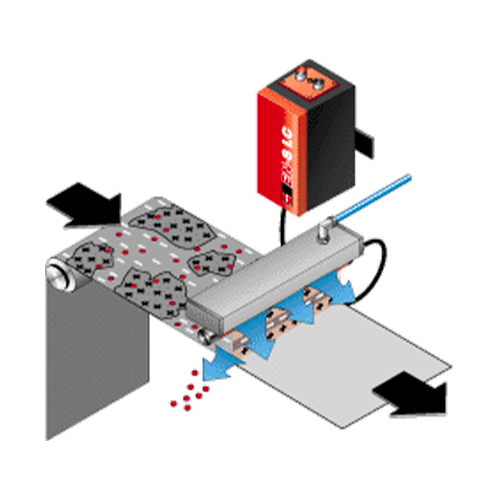
Single-bar blower KL-GK
This blower media is an excellent production aid, used to remove electrostatic charges, dust resulting in production slowdowns. High-power nozzles are installed on both sides of the discharge bar, and with their special angle they allow perfect blowing of ionized compressed air and high dedusting. In cases where compressed air is not available, the blower stand mod. KM-GK equal to KL-GK but with the D=5mm nozzles and connectable to a blower can be used. However, due to its limited pressure, the same dedusting effect cannot be achieved, only the remote elimination of electrostatic charges.

Two-Bar Blower LS-GK
This substrate with its high dedusting power is the best help in removing dust and electrostatic charges. It actually reduces production costs caused by the large amount of waste due to residual dust. The nozzles are installed in the center of the stand between the two discharge bars, and with their special inclination they allow complete dedusting of the material to be treated. The two discharge bars also allow a material speed of up to 200mt/minute.
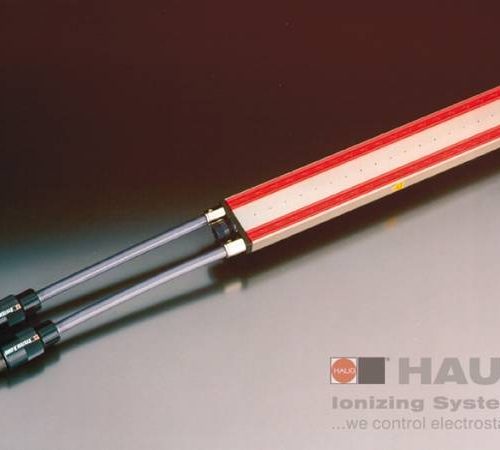
Mini Barrier Blower LS-PLE
Small-sized but highly effective unit. Two special antistatic bars are built into the very interior of the stand. In the center are arranged the blowing nozzles with a distance of 15mm between them.
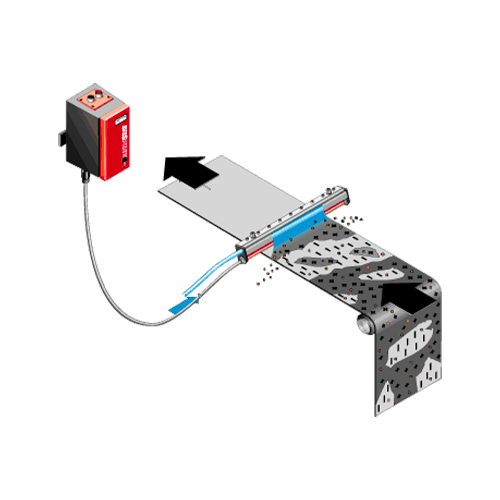
Air Knife Blower AK-GK
The special feature of this blowing stand is well evidenced by the drawing below. In fact, it is not composed of individual nozzles, but of a mini-slit through which air passes and which produces what is called the “Coanda Effect.” A discharge bar is attached to this substrate to ionize the air that will electrostatically discharge and depowder the material.
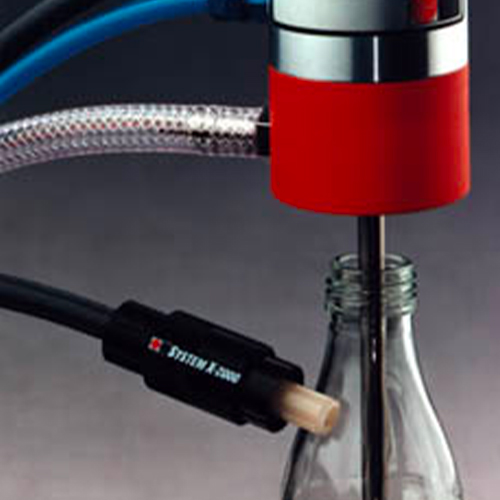
NI Needle Blower
This ionizer model is used when you want to electrostatically discharge the inside of vials, bottles etc…
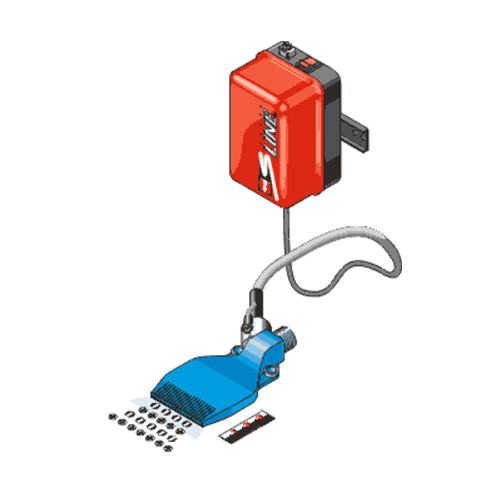
Mini-spot blower MJ I
This ionizer produced by HAUG neutralizes electrostatic charges with the help of a mini compressed air stand. It consists of a One-Point Ionizer described in discharge systems, with the addition of a small flat blower stand. It is used where limited space is available, or where concentrated, extra-flat ionized air flow is needed.
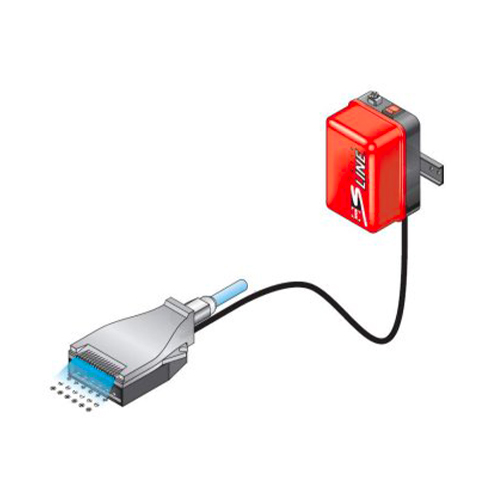
MJ II mini-spot blower
Compressed air blower ionizer of extraordinary effectiveness, due to the presence of three ionizing tips, which, however, due to their power are not touchable. Ideal where great power is needed in a small space.
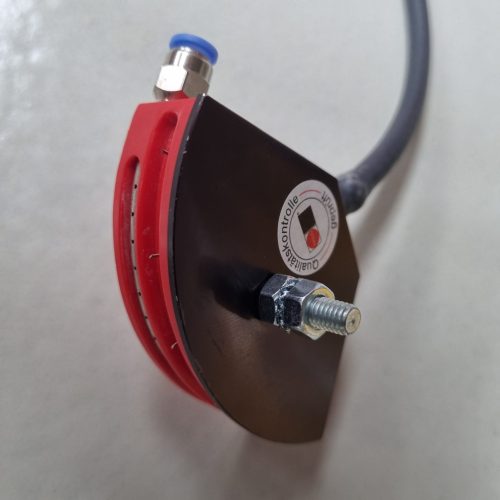
Delta Blower DA-TR
The special feature of this air blower ionizer is its delta shape. In fact, with only 85mm width, it can discharge an area of 300/400mm when installed at a distance of approx. 200mm from the material. Because of its flexibility, it is ideal in installations with little space available, but a large area needs to be covered.
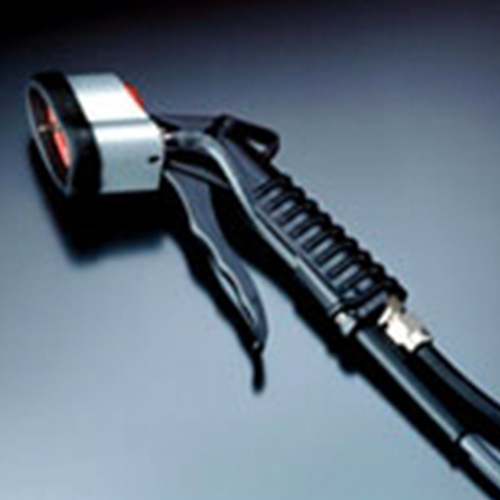
Ionizing Gun RI LG – Lady Gun
The RI-LG “Lady Gun” ionizing gun gets this name because of its handiness: in fact, it is popular especially with women who require a light equipment with an ergonomic handle, while also being used for heavy work.
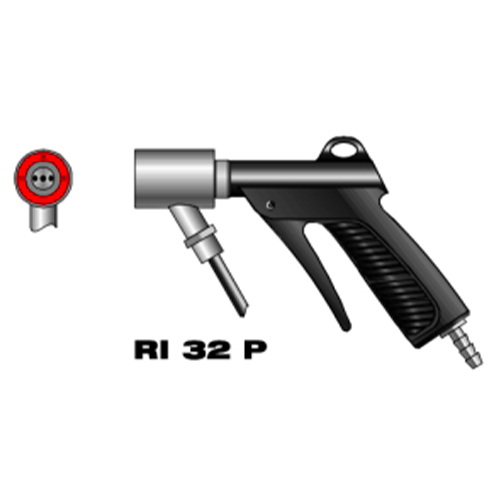
Cylindrical Ionizers EI RI
The cylindrical RI (Ring Ionizer) is a highly effective aid for electrostatic discharge and cleaning of surfaces, especially dielectric materials. They are available in gun and gunless versions for fixed installation on a wide variety of machinery.
Do you want to request an offer?
Are you interested in receiving more information and being contacted by one of our specialized operators?
Request your offer now

Do you want to request an offer?
Are you interested in receiving more information and being contacted by one of our specialized operators?
Request your offer now
Frequently asked questions
What is electrostatics?
Electrostatics studies stationary electric fields, that is, generated by static charges arranged on dielectric surfaces.
What can be done with electrostatic systems?
One can eliminate the unwanted charge or one can generate a charge.
What is meant by ionization?
It is equivalent to the elimination of electrostatic charge. A bar produces ions that remove charges on the surface.
In what cases should a surface be loaded?
The most typical case is to make one surface adhere to another, making a kind of electrostatic “bonding.”
Are discharge and charge technically different processes?
Yes, a discharge (ionizing) bar generates ions while a charge bar generates a stationary electric field.
If I want to download a movie, can I use one ion bar?
No, since the charges on a dielectric are stationary it is necessary to discharge both faces of the film via two opposing bars.
Why not more simply use an anti-static brush?
This is a good solution to REDUCE the charge, but if you need to ELIMINATE the charge you must use an ionizing bar.
Up to what distance does a discharge bar act?
20-30 mm. However, with the help of appropriate compressed or ventilated air systems, it is possible to reach 500 mm and more.
Are there injury risks in the use of electrostatic systems?
Discharge (ionizing) bars are safe to the touch and do not give any problems (excluding special reported cases). The charge bars, on the other hand, should not be touched during operation; in fact, they should be shielded.
How can I verify the effectiveness of an electrostatic treatment?
Numerous electrostatic charge measurement systems are available in the catalog, but generally the result is seen immediately after treatment.

